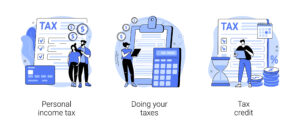IRS Amended Return
Source: IRS.gov
Posted: 4/23/2013
What should you do if you already filed your federal tax return and then discover a mistake? Don’t worry; you have a chance to fix errors by filing an amended tax return. This year you can use the new IRS tool, ‘Where’s My Amended Return?’ to easily track the status of your amended tax return. Here are 10 facts you should know about filing an amended tax return.
Use Form 1040X, Amended U.S. Individual Income Tax Return, to file an amended tax return. An amended return cannot be e-filed. You must file it on paper.
You should consider filing an amended tax return if there is a change in your filing status, income, deductions or credits.
You normally do not need to file an amended return to correct math errors. The IRS will automatically make those changes for you. Also, do not file an amended return because you forgot to attach tax forms, such as W-2s or schedules. The IRS normally will send a request asking for those.
Generally, you must file Form 1040X within three years from the date you filed your original tax return or within two years of the date you paid the tax, whichever is later. Be sure to enter the year of the return you are amending at the top of Form 1040X.
If you are amending more than one tax return, prepare a 1040X for each return and mail them to the IRS in separate envelopes. You will find the appropriate IRS address to mail your return to in the Form 1040X instructions.
If your changes involve the need for another schedule or form, you must attach that schedule or form to the amended return.
If you are filing an amended tax return to claim an additional refund, wait until you have received your original tax refund before filing Form 1040X. Amended returns take up to 12 weeks to process. You may cash your original refund check while waiting for the additional refund.
If you owe additional taxes with Form 1040X, file it and pay the tax as soon as possible to minimize interest and penalties.
You can track the status of your amended tax return three weeks after you file with the IRS’s new tool called, ‘Where’s My Amended Return?’ The automated tool is available on IRS.gov and by phone at 866-464-2050. The online and phone tools are available in English and Spanish. You can track the status of your amended return for the current year and up to three prior years.
To use either ‘Where’s My Amended Return’ tool, just enter your taxpayer identification number (usually your Social Security number), date of birth and zip code. If you have filed amended returns for more than one year, you can select each year individually to check the status of each. If you use the tool by phone, you will not need to call a different IRS phone number unless the tool tells you to do so.
Income the IRS Can’t Touch
Income the IRS Can’t Touch There’s one readily available and legal source of untaxed income that we know of: municipal bonds. These securities are issued by state and local governments, school districts, hospitals and other public agencies to support community projects and services. To permit these worthy endeavors to raise money economically, Uncle Sam exempts…
Avoiding Real Estate Tax Revaluations
Avoiding Real Estate Tax Revaluations by Steven Singer, CPA As a result of the passage of Proposition 13 almost thirty years ago, real estate owners currently enjoy paying property taxes based on the property’s purchase price, value of improvements and an annual increase of 2% over the previous years’ assessed value. As a result of…
Annuities in Qualified Retirement Plans
Annuities in Qualified Retirement Plans By Russell Hill Using annuities in qualified retirement plans. Qualified annuities reduce your current taxable salary in addition to accumulating tax deferred earnings, when you contribute money to an annuities program through an employer (as one of the investment options in a salary reduction retirement plan). Those who work for…
Paying Too Much In Taxes?
Paying Too Much In Taxes? By Theodore Lanzaro Now that the end of the year is near, it is time to review a few business tax tips for 2008. Anyone who owns a business or is planning to start a new business in 2008 should be thinking about maximizing the profitability of their business and…


